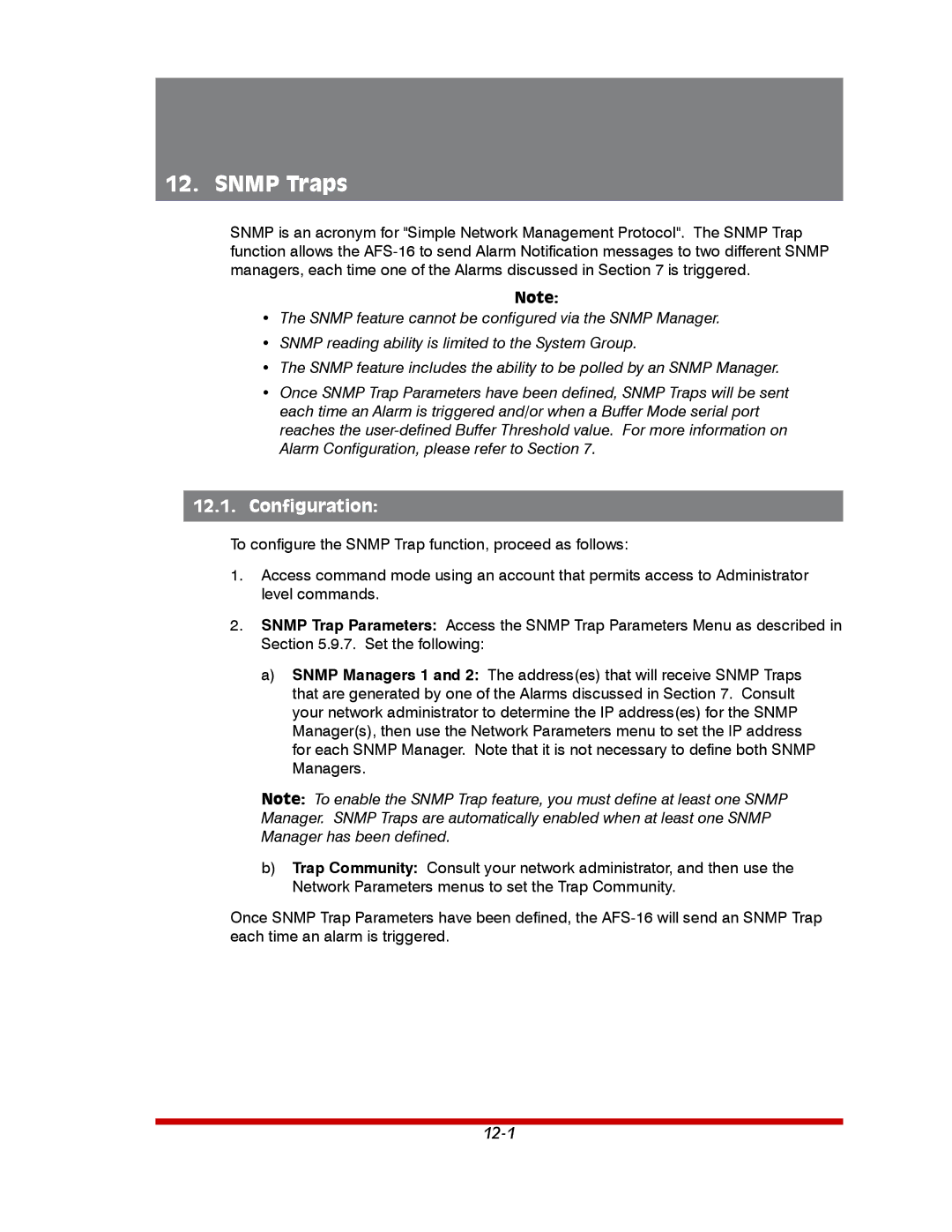
12. SNMP Traps
SNMP is an acronym for "Simple Network Management Protocol". The SNMP Trap function allows the
Note:
•The SNMP feature cannot be configured via the SNMP Manager.
•SNMP reading ability is limited to the System Group.
•The SNMP feature includes the ability to be polled by an SNMP Manager.
•Once SNMP Trap Parameters have been defined, SNMP Traps will be sent each time an Alarm is triggered and/or when a Buffer Mode serial port reaches the
12.1.Configuration:
To configure the SNMP Trap function, proceed as follows:
1.Access command mode using an account that permits access to Administrator level commands.
2.SNMP Trap Parameters: Access the SNMP Trap Parameters Menu as described in Section 5.9.7. Set the following:
a)SNMP Managers 1 and 2: The address(es) that will receive SNMP Traps that are generated by one of the Alarms discussed in Section 7. Consult your network administrator to determine the IP address(es) for the SNMP Manager(s), then use the Network Parameters menu to set the IP address for each SNMP Manager. Note that it is not necessary to define both SNMP Managers.
Note: To enable the SNMP Trap feature, you must define at least one SNMP Manager. SNMP Traps are automatically enabled when at least one SNMP Manager has been defined.
b)Trap Community: Consult your network administrator, and then use the Network Parameters menus to set the Trap Community.
Once SNMP Trap Parameters have been defined, the
